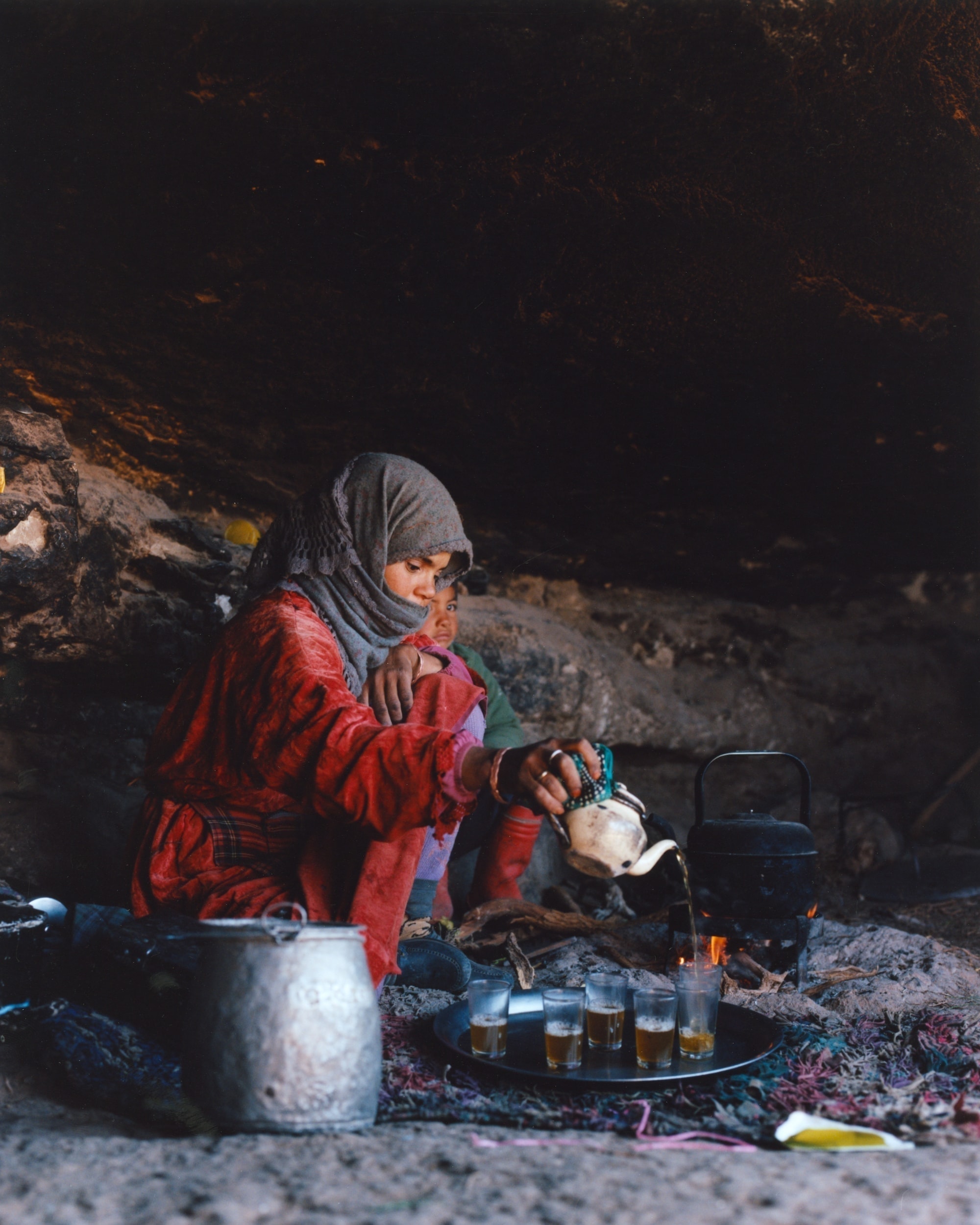
Hidden among the desolate landscape of the Moroccan High Atlas, there lives a small population of nomads. Here, generations of family settlements have found housing in tents and caves, herding animals for food and trade in the nearby towns. It’s an age-old and traditional way of life, and one that has minimal or no contact with the modernised outside world.
However, as the younger generations seek out education and job opportunities in the nearby cities and towns, this nomadic lifestyle in Central Morocco is resultantly in decline. Intrigued by this way of life is Joshua J Sneade, a photographer based in Bristol, who has recently captured the affects of the diminishing tribes in his series and book, Nomads.
With his camera in hand and interpreter in accompaniment, Joshua set out to the mountains in search for these constantly moving settlements. We caught up the photographer to find out more about this challenging time for Morocco’s nomads.
Joshua, can you begin by telling us about your subjects and what they do here?
The nomads I photographed live in family group – a mother, father and children (sometimes grandparents) – and they make their homes in tents and caves. They move from place to place every few months. Ethnically, everyone in this region of Morocco are Berbers. The nomads are just a small section of Berber society who live in a different way.
The nomads are just a small section of Berber society who live in a different way.
I heard that there’s around 10,000 people who live like this, but I think it is fairly hard to place an exact number. I believe at some point back in history, they adopted this way of life to deal with an external threat and they have just never reverted to a static way of life. They were incredibly friendly and welcoming for the most part, as are most of the people from the region in general; hospitality for strangers is a big part of the culture.
Are there any restraints or laws that make it difficult to leave this way of life?
I believe there is an issue with citizenship and that the nomads aren’t actually Moroccan citizens, which can make it hard to settle in a town legitimately. But I think if they wanted to leave, they could. But for most, it is the way of life that they have known and are used to.
As the younger generations are enticed by the towns’ offering of education and work, why do you think this is happening more so than with previous generations?
I think this is becoming more of an issue in recent times as the quality of life in the towns has grown very quickly in relatively recent years – much as it has in the rest of the world. These towns may not have had much of a different way of life to the nomads 50-100 years ago, but now there are schools, cars and grocery stores. I feel like it is more enticing.
The clearest example I can think of is a family of ‘half nomads’. This family lived very close to a town in a series of caves, and the young children (possibly just the boys, I can’t remember exactly) went to school there. They were pretty much static because of this and had set up more of a permanent homestead.
The father of this group had what looks like Parkinson’s disease, and I can’t help but feel like maybe this influenced his desire to see his children grow up in a town where life would be easier. Either way, our interpreter talked to them and told us that it would be very likely that the children, once they left school, would live in the town and get jobs, and that this family would not carry on the nomadic way of life.
After working on this series, what have been your biggest findings?
The people are on the face of it and are very happy – this was one of the most interesting things as, by our standards, they are living in extreme poverty. However, they were so friendly and welcoming to us when they had no real reason to be, which is very lovely.
The people are on the face of it and are very happy – this was one of the most interesting things as, by our standards, they are living in extreme poverty.
But it is also very obvious that this is an arduous way of life. The picture that sums this up the best is the man’s broken arm, which he broke as a child. There is literally no healthcare so it set completely wrong. I think it is understandable therefore that some of the nomads look to the towns idealistically – as sad as the potential loss of culture could be.
Where do you see the future heading for this way of life?
I feel like there will be people who continue the culture for at least a little while longer, although total numbers may dwindle. There were some few families who did not invite us in for tea but instead sent us away immediately, and I think it is unlikely that these people have much contact – or indeed a desire to have contact – with the outside world. They will probably be the ones at the very least who continue the lifestyle.




